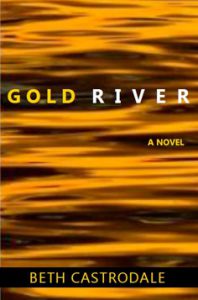
I originally published this piece in March 2018. See the closing for an update.
In my early drafts of things-that-might-be-novels, I imperfectly follow advice often given to writers: Keep your readers in mind. Although readers are at the back of my mind, I’m more focused on situations and characters that interest me, and that might drive a novel-length story. And then, step by imperfect step, I try to find that story and put it into words.
For me, this approach has been necessary for completing first, and sometimes even second, drafts. Yet almost inevitably, it blinds me to the shortcomings of my novels-in-progress. As I try to bring the characters and their predicaments to life, and to build a fictional world that feels whole and true, I might lose sight of the fact that certain plot or character arcs aren’t fully developed. Conversely, I might become overly attached to storylines or scenes that, however useful they were in helping me envision the fictional world, no longer serve the larger story.
Here, readers become essential. Once I have at least a first draft—and no sooner—I turn to others for help in identifying blind spots and other problems. Few readers have been more insightful than the seasoned book editors who helped me get my novels ready for publication.
The Fiction Editor’s Role/Perspective
Note: I originally published this piece in I’m going to limit my discussion to editing that focuses on big-picture elements of novels, such as character development and plot, because these are central to attracting and holding readers’ interest. Sentence-by-sentence editing (also known as copyediting), which addresses problems with grammar, syntax, word choice, and the like, is typically delayed until any problems with these larger elements have been addressed.
For my novels Marion Hatley and In This Ground, I was fortunate to work with two talented editors: Laurel Dile King, editor and publisher of Garland Press, which published Marion Hatley and In This Ground, and William Boggess, an experienced book editor I connected with through New York Book Editors. William helped me revise In This Ground for submission to agents and editors. Laurel and William identified paths to improvement without being prescriptive. This helped me figure out my own solutions to problems with the manuscripts.
In her reading of an early draft of Marion Hatley, Laurel noted that the novel’s title character, a scandal-plagued Depression-era corsetiere, didn’t seem to have the influence and agency necessary for a fully realized heroine. In the early draft, Marion champions a remarkably comfortable corset developed by her mother. In response to Laurel’s feedback, I got the idea of having Marion, not her mother, invent the feature that makes the corset so revolutionary. Through this innovation, the corset becomes a personal and professional source of pride for Marion, and it gives a financial boost to local women she enlists to help with customizing the corsets. Marion’s innovation also helps her realize a longstanding dream of making corsets less restrictive, and more lovely, for working women like herself.
In This Ground, set in the fictional Bolster Hill Cemetery, brings together the stories of those who work at or visit the cemetery, or in some cases, have been buried there. When introducing the novel to William, I described it as a novel-in-stories, in the vein of Olive Kitteridge by Elizabeth Strout. As in Olive Kitteridge, the story threads in In This Ground are brought together by a central character—in the case of my novel, a gravedigger.
But as William noted in his response to my manuscript, writing stories that can both stand on their own and come together “to make more than the sum of their parts” is no easy feat—something that, to his mind, my draft wasn’t achieving. As I delved into his comments on the manuscript, I saw that he was right. Referring to his suggestions about plot strands that might be pruned or expanded, I was able to let the in-stories aspect go and transform the draft into a cohesive novel, one that was more fulfilling than the original work. (For William’s perspective on the book-editing process and for more details on his work with me on In This Ground, check out this interview with him.)
The Fiction Writer’s Role/Perspective
As the previous discussion suggests, it’s the writer’s job to sort through the editor’s comments and figure out how to act on them. My own process for revising Marion Hatley and In This Ground began with reading and re-reading the comments and then taking a break from them. Next, I thought through ways to address the issues that Laurel and William identified, for the most part while I was away from my computer. (Walking and running really help me with the thinking-through process, and they seem to deliver unexpected insights.) I then jotted down possible solutions to the identified problems—several solutions, in some cases–and consulted with Laurel, William, and other readers.
While working on the revisions, I started with the biggest and most challenging issues first, focusing on only one at a time. In the case of Marion Hatley, a few of the changes I planned had significant ripple effects on other chapters. So I made a rough outline for the revision, specifying where the planned changes needed to be made and noting the ripple effects these changes would cause. (Some believe that outlines should have no role in fiction writing, but I find them invaluable for charting a course for first drafts, for helping me complete those drafts in a reasonable time frame, and for revising. In the absence of such advance planning, I once spent 12 years writing and revising a novel, which I vow to never do again.)
What do I do when I disagree with an editor’s comments or suggestions? As I mentioned during an author panel, I try not to dismiss any criticism out of hand. Often, it’s a sign that something is wrong, even if it’s not quite the something that the editor identified. In these cases, I try to figure out the underlying problem and then find a way to address it.
Revising a novel can be just as taxing (and rewarding) as writing one, sometimes even more so. But being able to work with a skilled editor makes the process feel less intimidating. Ideally, the two of you form a creative partnership, one that is mutually satisfying and that leads to results you can both be proud of.
If you have worked with an editor and would like to share any of your own experiences, please leave a reply below. I would love to hear from you.
Update: Since I published this blog post, I was fortunate to work with yet another talented editor, Megan Edwards of Imbrifex Books, the publisher of my latest novel, I Mean You No Harm. Megan helped me strengthen many aspects of the book, but especially the ending, which in earlier drafts was a bit abrupt and didn’t offer satisfying landings for certain elements of the story.
